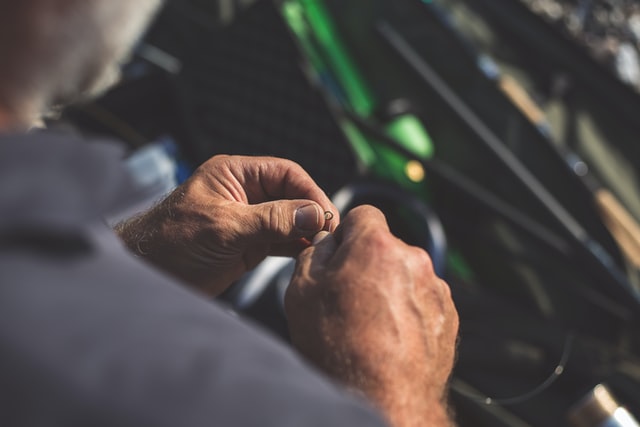Before you even start to fish, there are a few things you need to learn. One of those things is how to tie knots. Knowing how to tie knots is essential to fishing because it is how you’ll secure your hook and many other things.
Read on for a few important knots you need to know:
Fisherman’s Knot
One of the more simple knots to do, the Fisherman’s Knot is a popular choice for attaching your hook to your line. Given the nature of its simplicity, it is also easy to explain. Simply thread 2-3 inches of your line through the eye of the hook. Afterward, double back on the line and spin the hook 5-6 times so the end wraps around the line. Then, put the end through the loop created near the hook eye. Put the tag end through the bigger loop, then pull, cinching everything together. The Fisherman’s Knot is also known as the Half-Blood Knot.
Blood Knot
One of the most popular knots for tying two lines together, the Blood Knot is a handy knot to know. There are plenty of times in fishing where you want to tie two lines together. It’s also rather simple as well. You’re essentially tying two fisherman’s knots in opposite directions, while using a loop in the middle like it was the eye of a fish hook. Remember to lubricate the knot before cinching it tight and snip the ends.
Palomar Knot
The Palomar Knot is another way to tie a hook to a line. While you already know the Fisherman’s Knot, it’s always useful to know multiple ways to tie a hook to a line. Simply put, to tie a Palomar Knot, you must first make a 4-6 inch loop in your line. After this, pass the loop through the eye of your hook. Then, you need to tie an overhand knot with the double line, but before you cinch it, pass the hook through the loop.
Surgeon’s Loop Knot
The Surgeon’s Loop Knot is a bit of a different knot. The knot cinches above the eye, which allows a hook or lure to have some freedom of movement. This means that if you’re using plugs or spoons, they’ll be allowed to wiggle and attract as many fish as possible.
Snell Knot
Last on our list of knots to know, this one is for more complicated rigs with multiple hooks or attachments like sinkers. You can always just get yourself a fish hook knot tying device, which makes things far simpler.
However, if you want to learn it and give it a shot, the explanation is actually more complicated than the execution. What you want to do is get the end of your line and pass it through the eye of the hook twice. While doing this, create a loop while making sure the loop is larger than the hook. After you do this, wrap the loop around the hook 8-10 times, forming tight coils on the shank of the hook. Hold the coils in place with one finger, then pull the line until the loop is taut.
Conclusion
If you want to truly be an expert angler, you’re going to have to learn more knots than just these. But for a beginner, this is a great place to start! Make sure you use the right knot for the right occasion, and you should do just fine. Hope you catch lots of fish!
Trying to find the best fish knot tying tool that will make your fishing even more relaxing? Check out Hook-Eze! It’s great for new anglers and those who have issues with dexterity like arthritis.
